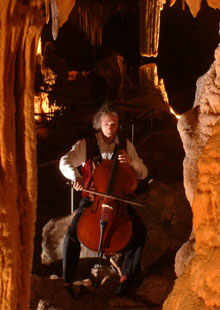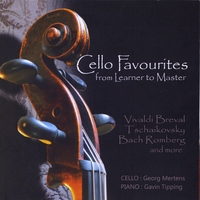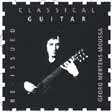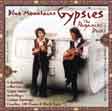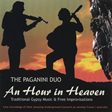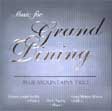Return to the Homepage of Georg Mertens
Sheet Music
Compositions
Arrangements
for solo, duo trio
cello & guitar method
The Six Cello Suites by J.S. Bach
Analysis - interpretation
Editions - History
___
Harmonic Analysis of
Preludes 1 & 3
Violinist Gustaw Szelski
1950 - 2021
&
The Jenolan Caves Concerts
Youtube channel -
Solos, Duos,
The 6 Bach Cello Suites
Cello Issues
Poems by
Georg MertensPoems by Han Shan
(Cold Mountain)
edited
by Georg Mertens
Articles on Music
___________________________________________
GEORG MERTENS 1998/2006THE AMAZING STRUCTURE OF THE SONG
OF THE AUSTRALIAN MAGPIE(COMPARING HUMAN AND ANIMAL AESTHETIC CONCEPTS)
(You can click on the paragraph headings below to forward)
THE FIVE DIFFERENT PARTS OF THE SONG
THE MIDDLE SECTION WITH THE CLIMAX
_______________________________________________________________________
INTRODUCTION
The Australian magpie is a beautiful singer. A difficulty arises when we try to sing his tunes. Somehow his melodies don't want to stick in our memory. Perhaps his songs are too chaotic, without structure, or we might not be geared to recognize his structures. Naturally, as long as we haven't recognized any structures, our memory would have nothing to grip on to when we try to remember his tunes.
In this chapter I attempt to show that the magpie's songs are structured, find out what this structures are and how they relate to the structural principles of our music.
It is a common concept to assume that our music is dominated by theoretical principles, which reflect certain philosophies or a sophisticated culture or traditions having their roots in specifically human qualities.
As we will see, these traditions seem to be shared with animals, as if our tradition or our culture is embedded in a much larger culture, a more universal one. It seems at a first glance to take away from the uniqueness of the human race. But it replaces this uniqueness - which means isolation as well - with a feeling of being at home with equals on many more levels as commonly imagined. We find a cultural relatedness to birds! Finding shared structures gives us clues to the roots of language and music, one of the shared ingredients of all human cultures.
HOW IT STARTED
I tried to sing the tune of a magpie, who was regularly sitting outside my window on a TV antenna. He sort of repeated his song with little variation, but I could not manage to remember it. It crossed my mind to search for the climax in his little song (having nothing else to do during my tea break). Instantly my perception was transformed. The structure of the little song fell into place.
The structure of the song was always as follows:
* The tune had distinctively 5 sections (A to E).
* At least the first and last section, but often all 5 sections started with an upbeat.
* The climax was always at the end of the C section, prolonging this section leading up to the longest and highest notes.
* The most varied section was the C section, where the bird seemed to let free his fantasy and enjoy his improvisation.
* The point of the climax coincided with the so calle "Golden Ratio" which was isolated as being the proportion most pleasing for the human eye and ear. The longest and highest notes stretched exactly over this section.
* The first and last note of the whole song were the lowest notes; the bird started from it and came back to it like to a key note (not related to a pitch).
* when the bird was interrupted he cut the phrase short he was in, and quickly did a short version of the last section including the keynote - before he took off or looked around.
* There was no distinctive beat to the melody, although the proportions didn't seem accidental; short notes had a musical meaning in their shortness as had the long notes;
THE FIVE DIFFERENT PARTS OF THE SONG
The magpie's song can be divided into 5 parts.
The first section and the last, A and E, are in pitch the lowest.
In the first section the bird often starts with an anacrusis, which is higher in pitch than the second note. The last section starts frequently with an anacrusis as well but the lowest note is always the last note, like a keynote. The first and last section are short sections often only containing three notes - not including the anacrusis - of which the middle note is the highest.
The anacrusis and the "keynote" are handled according to the same characteristics as we find it in the Allemande or Courante, dance forms of the Baroque Suite.
The sections B and D are bridge sections. The melody is in section B ascending from section A to the middle section C and descends in D again to section E. The length of B and D slightly more extended than section A and E but the melodies are in pitch higher.
This gives us our common ternary form of human songs like "Twinkle, twinkle little star" or of our Sonata form where the theme returns in the recapitulation again in the original key. (It is a strange thing to imagine, that the magpie sang using the structure of our Sonata form, which developed in the 18th century, using a mathematical structure, which was defined in the fifth century before Christ. He sang using this structure already at a time, when our species was not able yet to sing or speak, not to mention improvise in musical structures; who knows how many thousands of years it will take us to discover how advanced many animals are acting today)
In difference to human songs the melody of the magpie seems to be more symmetrical: whereas A and B are sung forwards, D and E are like AB sung backwards with slight variations.
I found that older magpies get more careless in the perfection of form; an older magpie might combine sections A,B and sections C,D. These pairs of sections will melt together, shortening the song to an ABA' form.
I also heard older magpies (as on the recording "Australian Bird Calls") who virtually literally repeat sections of the song. In the recording the magpie repeats the section from the climax to the end 3 x, as if written in the score.The change of style from a young to an old magpie reminds me of students learning composition. First they practice simple gurgelling sounds, like exercising their voice. Once having mastered all elements, they need to exercise in a strict style; once they mastered the sense of form, they can start operating freer and even ignore the initial formal structure while keeping a general sense for balance. The same will do a performer who approaches a new piece. First he needs to be able to play the piece in absolutely strict rhythm. Once he is sure about that, he can - and actually needs to - go out exploring how a phrase can be shaped most effectively, be guided by expressiveness and mood without losing the established feeling for the rhythmical structure.
THE MIDDLE SECTION WITH THE CLIMAX
The middle section C is the most creative of the sections, each time turning out differently dependant on the mood of the bird. Our one year old bird kept the length of the section quite in a similar frame.
The climax stands out clearer than in an orchestra movement. Where as most notes are a deedle doodle, going up and down, the climax are loud and long notes in high pitch, the highest in the whole song, at the border of distortion. The long and high notes are sung in succession, more than one at a time, making up a distinct stretch of the section. This stretch of high notes is sung towards the end of the section.
To attempt an interpretation, it seemed to me that a young bird establishes at the beginning a few phrases with which he starts off with. Once in the frame of mind of singing, confidently making a loud noise, he feels secure enough to let go his fantasy and improvises. The older the bird gets, the more secure he gets and the more he can extend the part of improvisation.
I make here some assumptions from a human perspective: firstly that repetition of a phrase is less risky than a new phrase. Secondly that the bird wants to improvise, he finds it worthwhile for some reason, enjoyable. Therefore he gives it as much space as he can cope with. As soon as he can cope with more, feels safe enough, he will improvise more instead of singing the known song twice (what many other bird species do). This would be parallel to a performer who allows as much freedom as he feels safe with; an insecure performer sticks to just the written notes strictly in time.THE CLIMAX AT THE POINT OF THE GOLDEN RATIO
There is much fuss made about the point of the so called Golden Ratio which is symbolized with the letter phi of the Greek alphabet, which stands for the Greek sculptor Phidias, who used this ratio widely for his sculptures including many in the Parthenon(440 B.C.). Leonardo da Vinci tried to dissect the proportions of the human body into Golden Proportions in his treatise "De Divina Proportione". This relationship has also been investigated by the mathematician Fibernace.
The proportion can be described as such:
We have a line with the length A. We divide this length A into 2 parts, B and C according to the golden proportion. B would relate to A exactly as C relates to B, or expressed in the number ratio:
C would be 0.618 of B; B would be 0.618 of A.
This point of 0.618 of the overall length is the point of importance, where the climax is located. Long before Phidias the Great Pyramid of Giza was built to the same proportions. Throughout history the Golden Ratio was considered the most pleasing to the human eye.
In 1973 an interesting dissertation was published by Clive Pascoe, the "Golden Proportion in Musical Design", demonstrating that the Golden Proportion not only extends for visual perception but for music as well. He demonstrated convincingly in 50 random chosen movements from written compositions in the Western European tradition over 3 centuries that the climax is always at the Golden Proportion.
Interestingly enough Pascoe cites the bible (1973 !) as the first authority to back up the truth of the figures: "In him everything in heaven and earth was created, not only things visible but also the invisible orders" (Colossians 1:16). And he writes in true Pythagorean tradition: "The implication could be drawn that proportional relationships and balances found in Nature reflect their Divine origins."(p.9)
Without arguing this point I was very surprised to find out that whatever divine authority it was, it selected magpies as well to fancy the Golden Proportion!
I came to the conclusion that we as humans share certain structures in our musical expressions with animals. I found since then that other birds share other patterns with us.THE KEYNOTE
In our language a sentence has about the length of a breath and this is the length of a musical phrase as well. The usual curve of the melody in a sentence is as follows: it starts low, rises in the middle and is low again at the full stop (similar to the "Golden proportion"). If we keep the voice up at the end of a sentence we do it to point out that the sentence is not finished: Either it was a question and needs an answer for completion or the sentence continues with a sub-sentence.
The magpie starts with a low note, then sings his song and returns to the low note again. The last low note is in a similar range as the first one, but the last note is the lowest of the whole song; sometimes the magpie repeats the lowest note several times during the last sections, only separated by short notes or turns in between.
Like the magpie, Classical composers like Beethoven and Weber also repeated the confirmation of the keynote at the end of a movement, often for several pages of the orchestral score.
The last note more than any other note in a piece of music seems definite. The last note determines a lasting impression, confirming the root. In Classical music, this note is generally the keynote, which is the base note of relevant scale. Without stating the keynote, the lasting impression would be unsettling.
When our bird was interrupted, it cut short the section of the song and quickly jumped to the last phrase including the keynote. It seemed that the bird avoided taking off without the proper finish with the keynote, as if the lack of the keynote would have caused discomfort.
When I played at weddings the Pachelbel Canon for the processional, the bride would often have arrived before the music was even half through. We gave each other a sign and skip to the last bars to have a proper ending: because any music without a proper ending sounds even for the amateur listener unfinished.
The cellist Rostropovich recalls that he played a Tango finishing on an open accord without stating the keynote afterwards; multiple guests at the gathering including not musicians complained, urging him to please finish off the piece properly. Not playing it would be like holding a speech and finishing in the middle of a sentence. It seems we share with the magpies the rudiments of the urge to have a structure completed in the exact same way.
THE LACK OF A DEFINITE BEAT
When I listened to the magpie, I realized I was not able to capture the melody earlier because I was waiting in my mind for a rhythmical structure. I "lost" track by the freeness or absence of rhythm. Our beat is based on regular movements, a measure, like walking: right left, right left.
When ducks quack they have a beat, continued from the flapping of the wings or the paddling of their feet. But the magpie sits still. An agitated magpie will scream rhythmically in his flight, but when he sits still he is free from this association. We might assume that the lack or the presence of a definite beat expresses for the bird something; in turn we can assume that in human music the lack or presence of a regular beat is taken as a means to express something as well. Birds do it intuitively, where as humans demonstrate a meaning or an expression purposefully. Sometimes a similar expression with the same meaning might come to both, the bird and humans.
The lack of a definite beat is often noticeable in ritual music in human cultures, which is performed sitting or standing still. eg in Indian ritual music or in Western Gregorian Chant we don't find the definite ongoing beat which we are used to from Sonatas and Symphonies; the latter being based on a regular beat, the "time signature" or in the folk language also called the "dance call" indicating the kind of rhythm. The definite beat indicates movement; the lack of it emphasizes the lack of movement, stillness.
THE ATMOSPHERE OF IMPROVISING
If birds mark their territory by singing, we can't stop with this functional interpretation and need to ask: is it not interesting that in that case not all birds scream as loud as possible, and jump around at the borders of their territory? But they don't. They sit at any place within an area where they feel at home and sing in phrases according to aesthetic principles.
The magpie stops singing as soon as he feels uncomfortable or needs to do something for his protection like flying away. This would mean that he does not sing to create safety but only sings when the conditions for safety are met. This can be supported by the fact that magpie frequently closes his eyes when he sings - and besides that he can't hear anything except his own voice when he sings. That means that the moment of singing is a vulnerable time, and he will only risk doing it in total safety. We might then wonder why a bird spends so much time and effort into an activity which does not contribute for his safety; why is he so creative? Do we need creativity for survival or does it perhaps sharpen our mind, trains our phantasy when boredom in safety could make us too dull?
CONCLUSION
As a conclusion we can observe that our sense of tune and proportion rests on two grounds: genetic material and learnt material. It seems that we share the genetic material including the sense of mathematical proportion with magpies and perhaps other animals.
We need though to be careful with this interpretation. It is perhaps only a belief that mathematical relationships are more objective than such ones, which we can't grasp mathematically. The only firm assumption we can make is that a mathematical relationship is accurately repeatable. But the initially stated relationship might be far from objective, it can as well be a personal opinion and can be wrong (like the belief that the earth is a perfect disc/ball etc). The difference to a non-mathematical opinion is, that the mathematical relationship is so firm, that it can be taught and repeated with absolute correctness, which gives it an immense power; it can make this opinion last over millennia without a possibility of misunderstanding.
Embedded in a culture which learnt to follow dominant mathematical laws in music it happened interestingly enough that we learnt in other places to ignore the mathematical relationships of nature as they occur. We did this in the perception of intonation, where our ears got used to find ugly what natural mathematical laws show us to be correct and in tune. e.g. natural harmonics as they are played in most non-Western cultures are perceived for the Western culture as out of tune, ugly for our ears.
This shows us, that our feeling for beauty is learnt to a large degree. It seems that an initial pattern is laid down by nature. Many cultures and animals respect these patterns. But it is possible for humans to detour from this given pattern to a certain degree under the influence of a culture, which puts dominating ideologies above nature. Born in such a culture, the strength of learnt patterns is so strong, that our ear detests the given natural patterns.
It seems logical that a culture, which does not take nature as a guideline, needs to declare humans with their mind and its products as superior to nature. It seems logical too, that such a culture had to prosecute e.g. pagan thinking, which accepted animals rather as equals, humans not as superiors. One of the reasons for this tendency could be that only a dominant culture based on the human mind could secure the total power of certain human individuals, which in turn declared their power relying on a God, which they defined.
By observing the similarities between our music and the bird's songs I hint, that our culture lost part of its identity when early Christianity exterminated the roots of early European ritual music.
The continuous change of Western music, the search for new identity, the eager embrace of other cultures in the urge to find deeper roots, digging up older and even older music since music writing came into being - can be understood as the search of identity of a culture who was forced to give up a big part of their musical identity: ritual music. This important part of mid-European culture was replaced by Christian Chant only, music from minor Asia and the earliest areas converted to Christianity like Bulgaria and Egypt.
Thousand years later in the early renaissance, only village dances and folk songs were left to give the basis for our concerts, sonatas, suites, symphonies etc.
Thanks to our magpie, a whole train of thought started to roll...
- The magpie does not start mating before the age of 5 years. He would be biologically ready after 2 years, the following 3 years he uses to practice his song to perfection.
It is impressive to see what high importance the value of cultural quality has in animal life.A comparison to humans: we are ready to mate with let's say 12 years of age. But our culture too finds it important that we mature in our mental, cultural and educational abilities. Many couples today decide not to start a family before they achieved some not biological development like professional success, higher education or financial stability.
I try hear to expressed magpie magpie laws for human society:
Although we are biologically ready to mate with the age of 12, this is not acceptable.
From the age of 13-30 (18 years) everyone has to complete a performance degree in music. Neither church nor state will otherwise allow marriage. Who does not complete this degree will be a social outcast with no chance having ever a relationship and will also be seen as utterly unattractive.The law of the magpies.
DONATION helping to keep this project going (Unit $30).
Georg Mertens playing "Didgeridoo" for solo cello
in the Cave
(click on photo to listen)
(photo Rob Whyte)
CONTACT
georgcello@hotmail.com
CD's with Georg Mertens
(Click on CD covers to listen)
Jodie Goldnay / Georg Mertens
(recorder & -cello/guitar)
- includes: Arabia Nocturna & Didgeridoo
Georg Mertens (cello) & Gavin Tip
Georg Mertens & Gavin Tipping
Cello Favourites
Georg Mertens - Guitar solos
(Jenolan "Call Waiting Music")
The Paganini Duo - Gypsy music
The Paganini Duo - Gypsy Live
The Blue Mountains Trio
"Muisc for Grand Dining"
